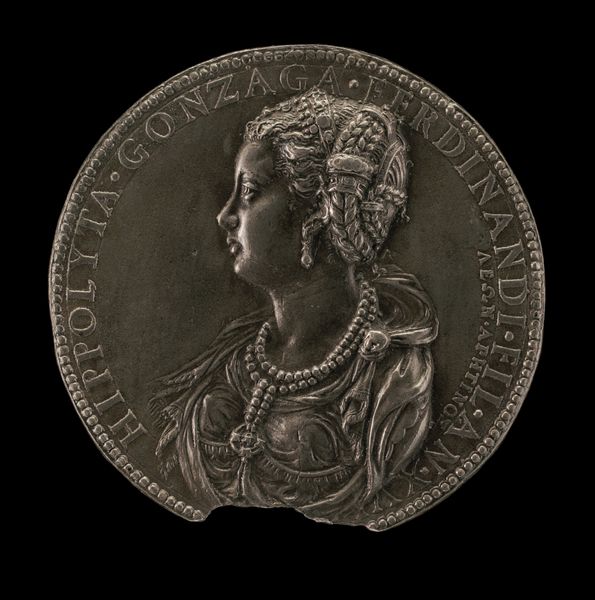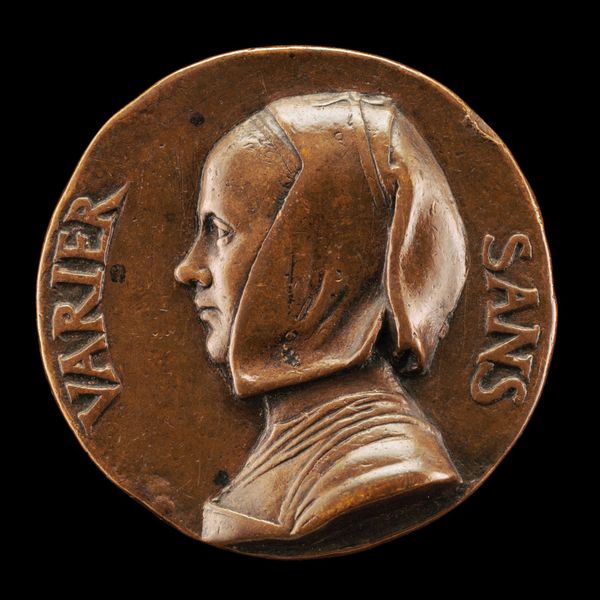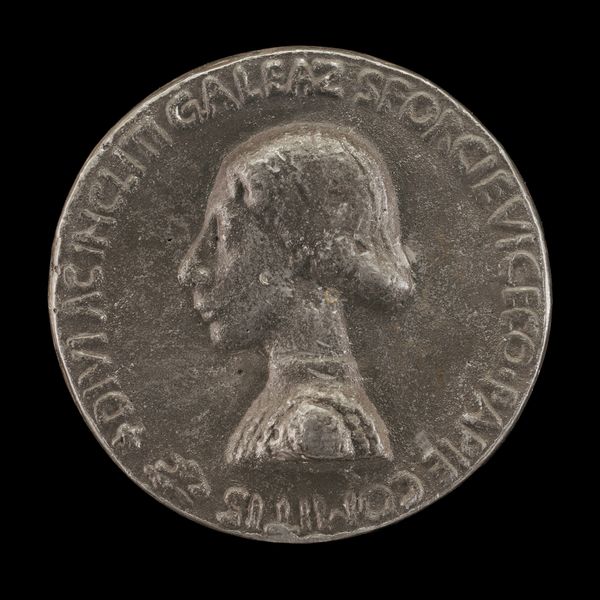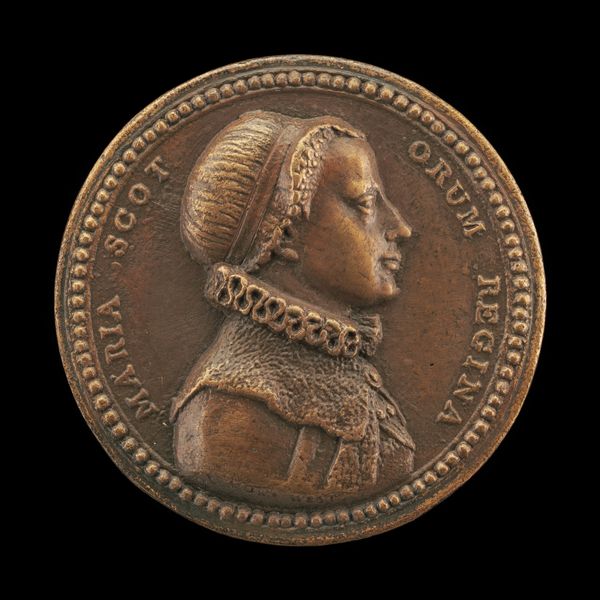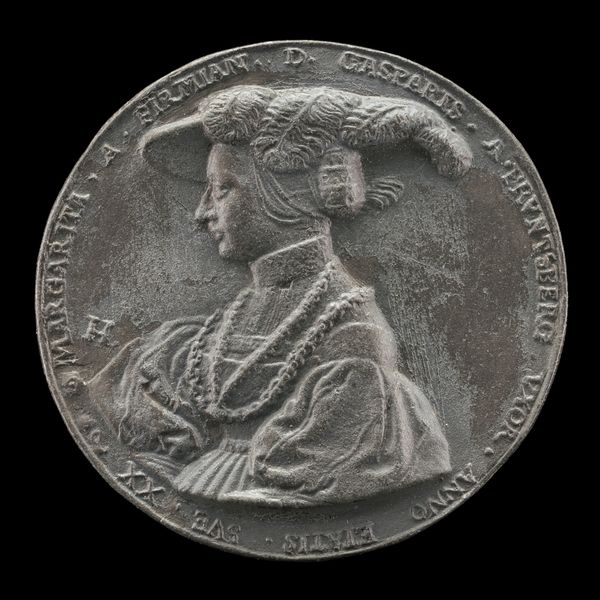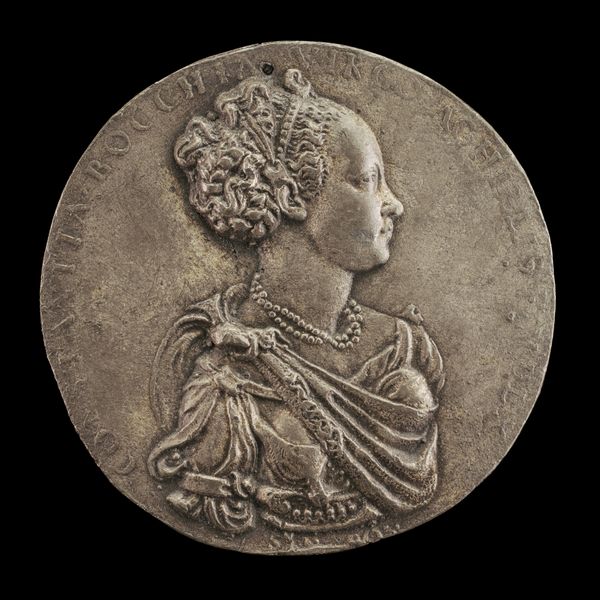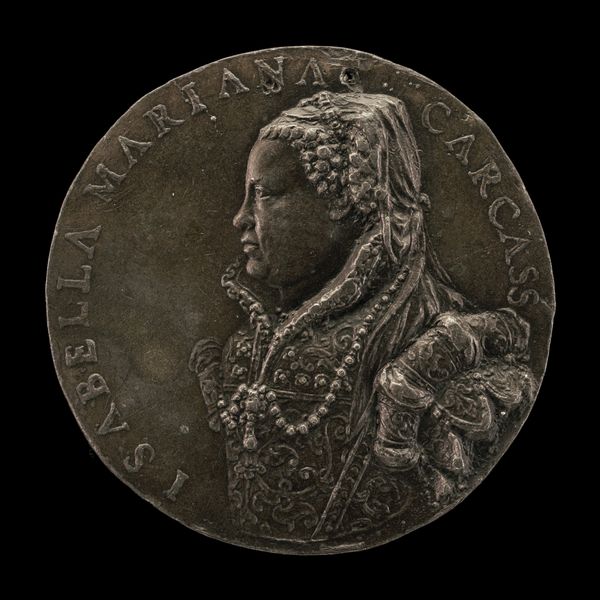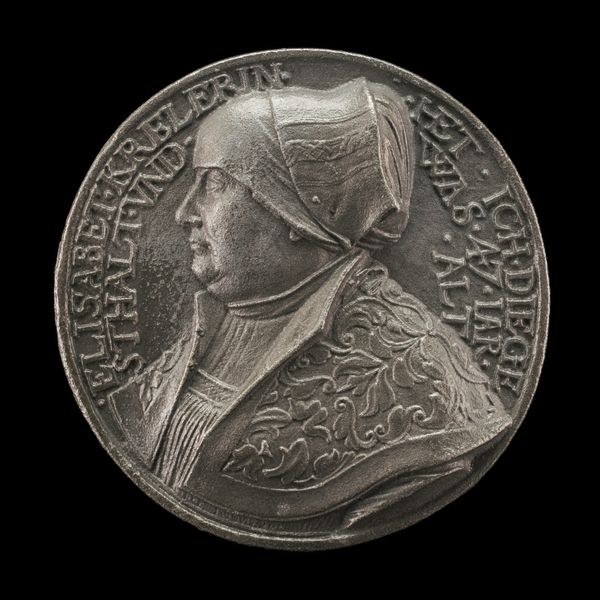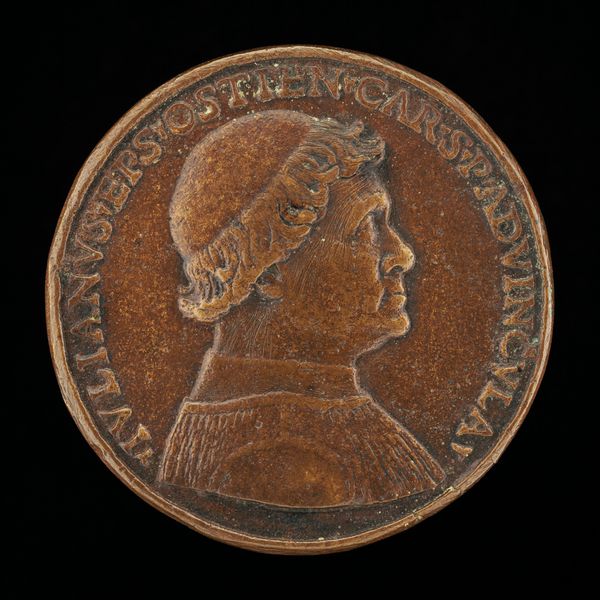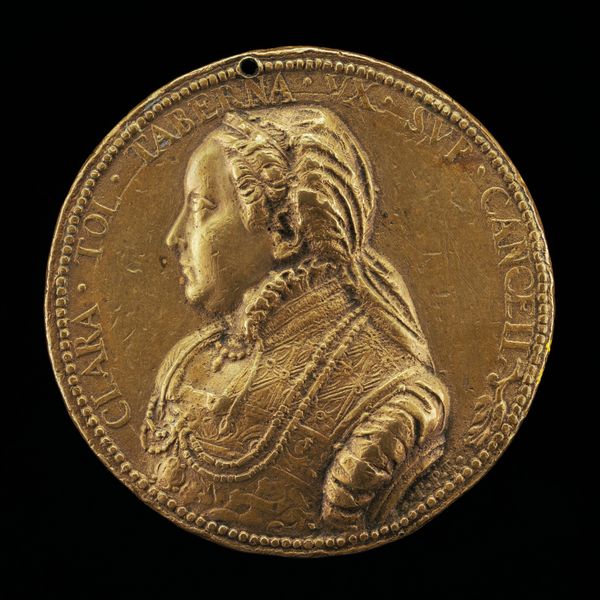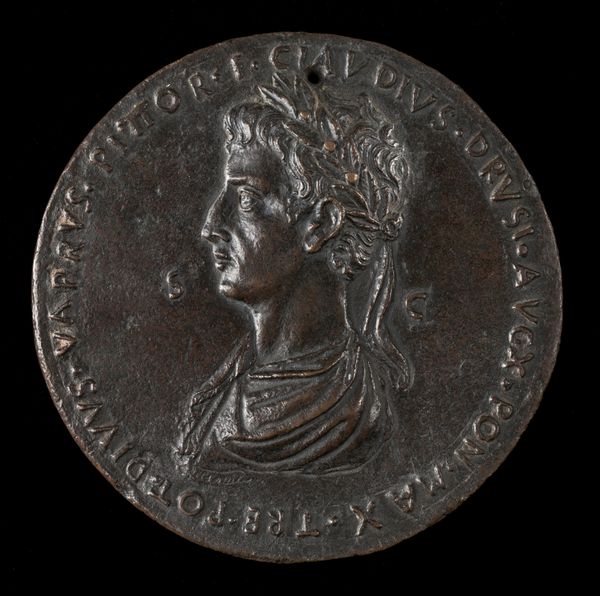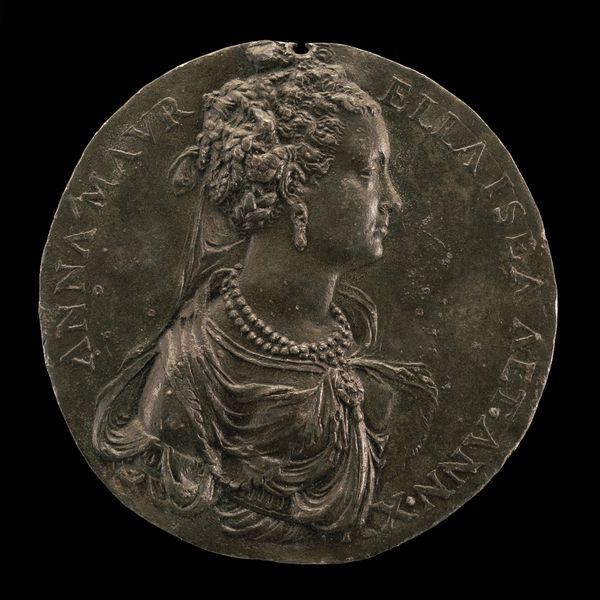![Magdalena Rummel, Wife of Lorenz Staiber 1509 [reverse] by Matthes Gebel](/_next/image?url=https%3A%2F%2Fd2w8kbdekdi1gv.cloudfront.net%2FeyJidWNrZXQiOiAiYXJ0ZXJhLWltYWdlcy1idWNrZXQiLCAia2V5IjogImFydHdvcmtzLzc1MDI0MjAxLTdlMzQtNGI1NC05MjNiLWM1Nzg2YThkYWVhOS83NTAyNDIwMS03ZTM0LTRiNTQtOTIzYi1jNTc4NmE4ZGFlYTlfZnVsbC5qcGciLCAiZWRpdHMiOiB7InJlc2l6ZSI6IHsid2lkdGgiOiAxOTIwLCAiaGVpZ2h0IjogMTkyMCwgImZpdCI6ICJpbnNpZGUifX19&w=3840&q=75)
Dimensions: overall (diameter): 3.81 cm (1 1/2 in.) gross weight: 27.39 gr (0.06 lb.) axis: 12:00
Copyright: National Gallery of Art: CC0 1.0
Curator: Looking at this relief crafted around 1535 by Matthes Gebel, we see "Magdalena Rummel, Wife of Lorenz Staiber 1509 [reverse]", a striking portrait rendered in metal. What are your initial thoughts? Editor: Austere. There’s a kind of formal intensity to the composition. The precision of line and the cool materiality really enforce a sense of reserved power. Curator: Absolutely. It speaks to the emerging role of women during the Reformation, doesn't it? Wealthy merchant families like the Staibers gained influence, and commissioning such a medal affirmed their status while presenting a certain ideal of female virtue: piety and stoicism, no frivolity. Editor: Observe the carefully modulated relief, though. See how the artist subtly models Magdalena’s features, highlighting the planes of her face? The rendering of the jewelry offers a study in contrast, but always controlled, measured. Curator: Yes, her adornment, while undoubtedly expensive, is carefully chosen not to distract. Think about the societal restrictions placed on women's expression, even those with means. This medal becomes an artifact of those power dynamics and the complex ways women navigated them. The inscription around the edge, almost a form of branding for both Magdalena and her family. Editor: A key function of portraiture of this period, most certainly, but there’s also the interplay between line and plane; notice how the hard edge of the metal disc constrains and focuses our gaze on the meticulously crafted face. The textures Gebel has coaxed out of the metal are simply superb, from the subtle play of light on the cheek to the patterned cap. Curator: Right. That brings me back to the craftsmanship as a conscious statement. A marker not only of her social standing, but how she wanted to be viewed by the social network the object itself would have circulated amongst. I imagine it on display as a conversation piece in their home. Editor: I can almost feel the weight and coldness of the metal; its inherent properties lend such permanence to the depiction. Curator: It makes me wonder about Magdalena herself. What were her ambitions, her thoughts? These are the questions art history strives to uncover. Editor: For me, the medal remains a perfect study of formal control—every line and contour serves to emphasize both a physical likeness, but an overall aesthetic idea of dignity. Curator: And to connect with her, a woman across half a millennium… remarkable.
Comments
No comments
Be the first to comment and join the conversation on the ultimate creative platform.
